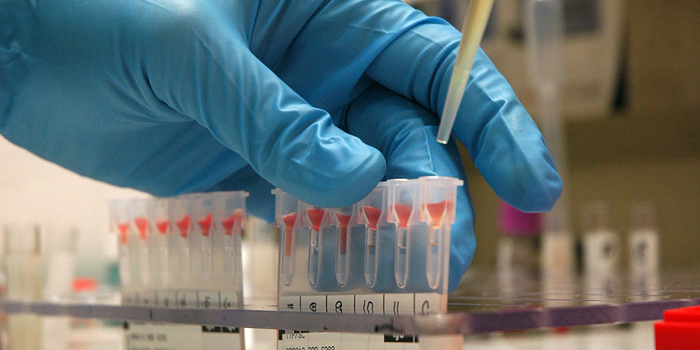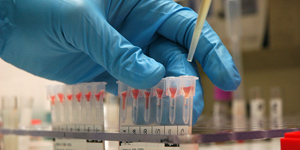Real-world Blood Typing and the Value of Blood Donation
Thanks to blood donors around the world, lives are saved every day with transfusions. Blood donations also make important treatments possible, like Anti-D injections used during pregnancy. With a hands-on science project, students can learn more about blood typing.

The Gift of Blood Donation
Over the last 60 years, James Harrison, age 81, donated blood more than 1,170 times. His donations are estimated to have helped save the lives of more than two million babies in Australia. Why? Because Harrison's blood contains a rare antibody which is used to make a medicine given to some pregnant women to protect against hemolytic disease of the newborn. Women who are Rh negative and carry an Rh positive baby are at risk of developing a condition in which the mother's immune system creates antibodies that attack the baby's red blood cells. Giving Anti-D (or Rho(D) immune globulin) injections during pregnancy helps prevent this, but making Anti-D requires blood donations containing the necessary antibody. Harrison is one of a small percentage of people with the antibody needed to make Anti-D. In Australia, Harrison, known as the "man with the golden arm," is part of a group of donors whose plasma is used in the Anti-D Program.
Making the medication to prevent a pregnant woman's immune system from attacking a baby with a different Rh type requires plasma donated by people who are Rh negative and have the rare Rho D antibody. Plasma donations are also used to make other life-saving treatments, immunizations, and drugs for various conditions, including tetanus (lockjaw), hepatitis B, and rabies. (Whole blood, which includes both plasma and blood cells, is used for transfusions that save 4.5 million lives per year in the United States alone.)
Understanding Blood "Typing"
Who can donate blood to someone and what types of blood you can safely receive depend upon both blood type (ABO) and the presence or absence of the Rh factor. Taking into account both ABO typing and Rh, there are eight possible blood "types" (e.g., A positive, A negative). Blood banks help store blood so that the right kind of blood is available when needed. Scientists were able to put Harrison's blood donations to such powerful use because of the presence of specific anti-D antibodies.
In the How Are Antibodies Used for Blood Typing? project, students explore, firsthand, how blood typing works. In the project, students use synthetic blood samples from the related science kit and experiment with antibody reagents to determine the blood type of four different people. The antibody reagents in the kit specifically react with the A, B, and Rh antigens on the surface of red blood cells. As part of the experiment, students observe how the synthetic examples react with each antibody reagent and determine both the blood type and the presence or absence of the Rh factor for each sample. (The Science Buddies kit for the project is sold through Home Science Tools.)
Careers in STEM
This hands-on biochemistry project lets students better understand how blood is analyzed and identified and lets them experiment, firsthand, with the kinds of science clinical laboratory technicians use every day. Projects like How Are Antibodies Used for Blood Typing? help students explore real-world science that is directly related to STEM career paths.
As Harrison's story shows, donating blood can save lives. But it takes scientists who understand how to analyze and identify specific qualities of blood and plasma donations to turn those donations into life-saving treatments. People who choose careers in biochemistry help save lives.
Students curious about the story of the "man with the golden arm" or the importance of anti-D or blood typing may enjoy learning more about the following STEM careers:
Making Connections
June 14, 2018, is World Blood Donor Day. Learn more on the World Health Organization site.
Categories:
You Might Also Enjoy These Related Posts:
- Plastics and Earth Day - Science Projects
- Arduino Science Projects and Physical Computing
- 10+ Robotics Projects with the BlueBot Kit
- 5 STEM Activities with Marshmallow Peeps
- March Madness Basketball Science Projects: Sports Science Experiments
- Women in STEM! More than 60 Scientists and Engineers for Women's History Month
- Explore Artificial Intelligence and Machine Learning with Student AI Projects
- 10 Reasons to Do the Rubber Band Car Engineering Challenge










